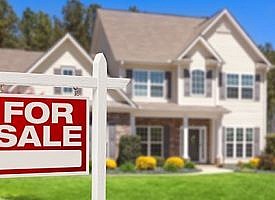Hurricane Ian has left chaos in its wake, leaving thousands of Florida and South Carolina residents struggling to cope with the loss of homes, possessions, jobs, and entire communities. The IRS recognizes that unfortunate truth and offers relief to those affected by the storm.
When FEMA designates a federal disaster area after a hurricane, tornado, wildfire, earthquake, or any other type of calamity, the IRS flags taxpayer accounts that have a zip code within the area and grants relief automatically. Following Ian, the agency is offering an extension of time to file a tax return for residents of Florida, North Carolina, and South Carolina.
Eligibility for Extension
Individuals and businesses in the impacted areas have until February 15, 2023, to make tax payments and file returns originally due between the effective dates for each respective state and the new deadline. The extension applies to quarterly estimated income tax payments and quarterly payroll and excise tax returns, among others.
It does not apply to income taxes owed for 2021 because payment was due by April 18, 2022, with or without an extension of time to file. However, payments due under an installment agreement are suspended during the disaster relief period and taxpayers who requested an extension can take advantage of the February 15, 2023, extended deadline to file a 2021 return.
All taxpayers in the listed states qualify for the extended deadlines even if they were not directly impacted by the storm. That broad eligibility may seem surprising, but the policy reflects a sober fact: Tax professionals who serve residents in the affected states are likely to be overwhelmed by post-disaster challenges (their own or their clients’), and therefore may be unable to deliver their services within the usual timeframe.
Section 139 Payments by Employers
Section 139 of the Internal Revenue Code allows employers to make qualified disaster payments to or on behalf of their employees for expenses not covered by insurance or other sources. The payments must cover or reimburse costs directly resulting from a federally designated disaster that are both reasonable and necessary to meet personal, family, living or funeral expenses. Costs of repair or rehabilitation of a home and its contents are also eligible.
Section 139 payments are not counted as income for employees or independent contractors, which increases their value to recipients, but employers also benefit. Employers can deduct the amount of qualified Section 139 payments on their tax return, but are not required to pay employment taxes, workers compensation, unemployment compensation, or pension contributions for these amounts.
This should incentivize employers to explore the feasibility of providing qualified disaster payments to employees—by making Section 139 payments as an advance on bonus compensation, perhaps, or determining other permitted avenues to support affected employees through Section 139 payments.
Casualty Loss Deductions
Losses for which payments are received under Section 139 are not tax deductible, although many individuals and businesses do suffer losses that can be deducted following a natural disaster. Note that in 2022 this type of loss is deductible by individuals only when it occurs as the result of a federally declared natural disaster such as Hurricane Ian.
Casualty loss deduction calculations depend on the amount by which the natural disaster reduced the FMV of the property and the taxpayer’s adjusted basis in the property. The decrease in fair market value can be determined via:
- An appraisal focused exclusively on the FMV impact of physical damage due to the casualty, or
- The cost of cleaning and repairs (not including any renovations that constitute upgrades or improvements to the property).
Compensation for disaster-related property loss from insurance or other sources reduces the amount of a taxpayer’s casualty loss deduction, but assistance such as food and medical supplies typically does not. As a general rule, payments received after a disaster only reduce the taxpayer’s casualty loss deduction if they are intended to replace or repair property that was damaged or destroyed in the disaster.
The IRS also has special rules related to deductions for expenses from a natural disaster. Taxpayers may deduct the expenses incurred in traveling to and from a temporary job location if the relocation is because their employer relocated due to a disaster, for a period not exceeding one year. Expenses for lodging are also deductible in this scenario, as is half the cost of meals while the taxpayer remains at the temporary location.
The IRS provides extensive guidance for determining casualty loss deductions in Publication 584, Casualty, Disaster, and Theft Loss Workbook (Personal-Use Property). Affected taxpayers should use Form 4684, Casualties and Thefts to report the loss on their tax return.
Publication 547, Casualties, Disasters, and Thefts offers additional guidance on the tax treatment of casualty losses but be aware that identifying deductible expenses, calculating casualty loss deductions, and navigating related tax considerations can be quite challenging. If you or your business have suffered losses due to Ian or another federally declared disaster in 2022, we encourage you to contact your Mauldin & Jenkins advisor for support.




